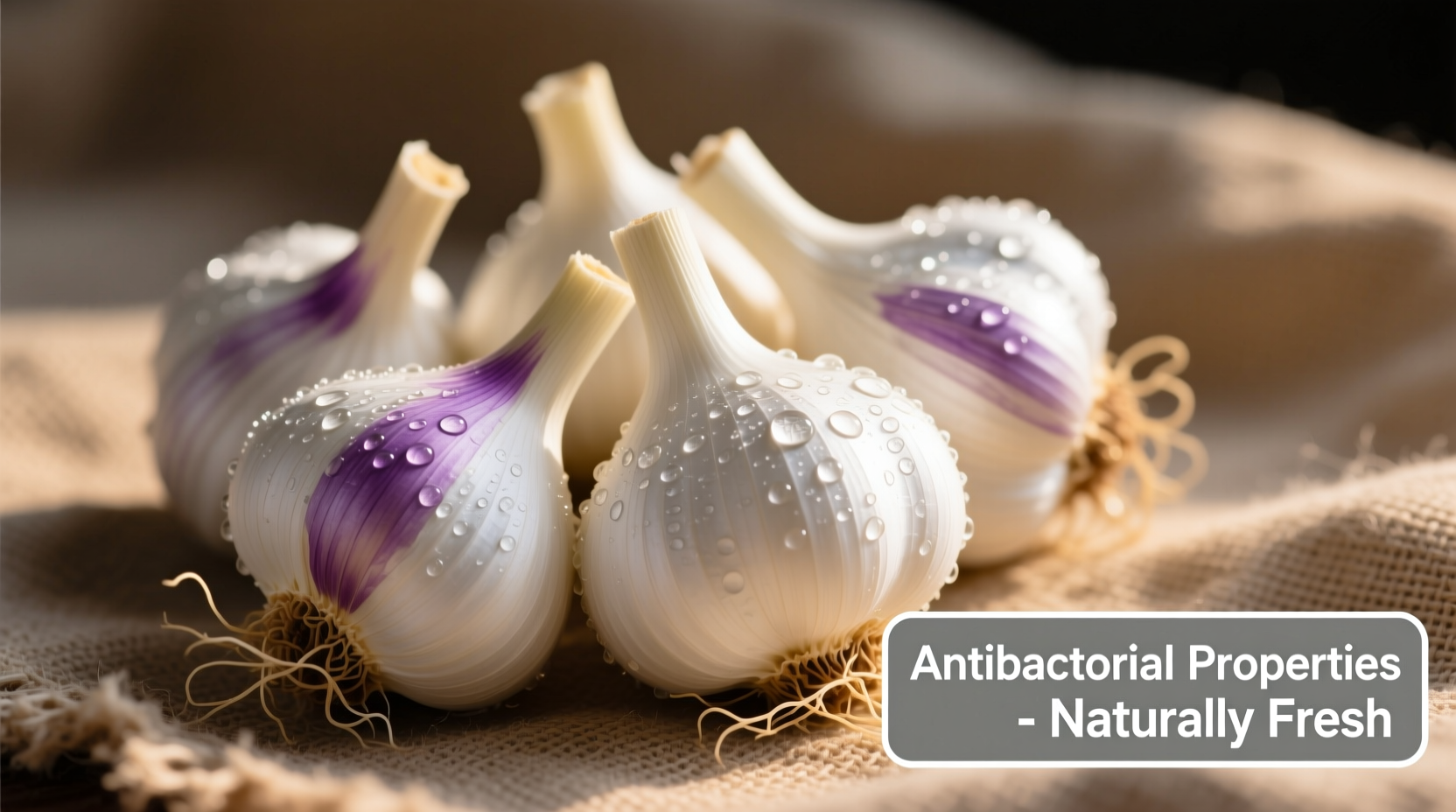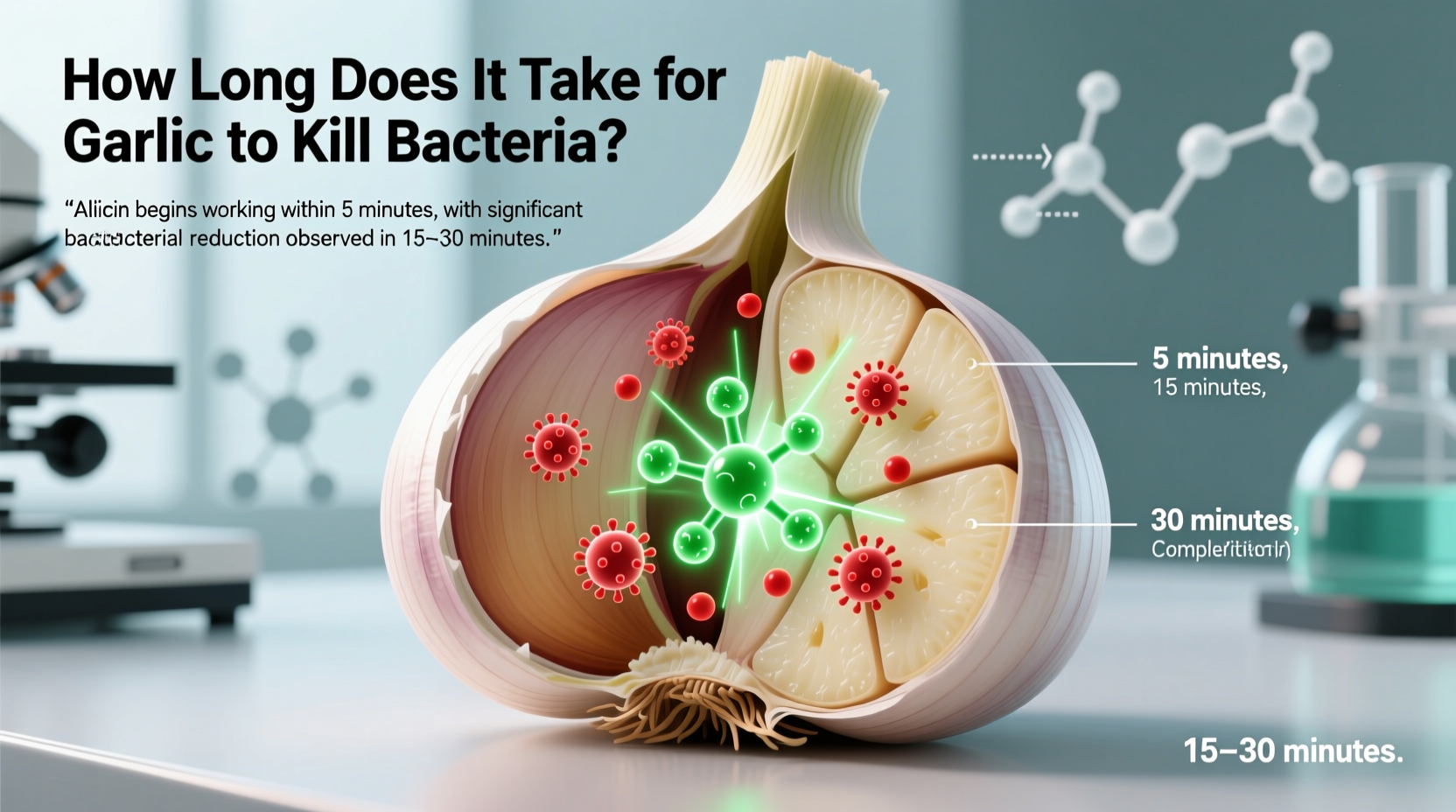Curious about garlic's natural antibacterial power? You're not alone. As more people seek natural alternatives for food safety and wellness, understanding the precise timeframe for garlic's bacteria-fighting capabilities has become essential. This article delivers science-backed insights you can trust, separating fact from folklore while providing practical guidance for everyday use.
The Science Behind Garlic's Antibacterial Action
When you crush or chop fresh garlic, an enzyme called alliinase converts alliin into allicin—the compound responsible for garlic's potent antibacterial properties. This chemical reaction happens instantly, but maximum allicin concentration peaks at about 10 minutes after preparation before gradually degrading.
"Allicin disrupts bacterial cell functions by reacting with sulfur-containing enzymes," explains Dr. Michael Avi-Dor, microbiologist at Tel Aviv University. "This interference prevents bacteria from reproducing and ultimately causes cell death."
How Long Garlic Takes to Eliminate Common Bacteria
Research shows significant variation in effectiveness based on bacterial strain and garlic concentration. The table below summarizes key findings from peer-reviewed studies:
| Bacterial Strain | Garlic Concentration | Initial Effect | Complete Elimination | Study Source |
|---|---|---|---|---|
| E. coli | 5% fresh extract | 10 minutes | 2 hours | Journal of Antimicrobial Chemotherapy |
| Staphylococcus aureus | 10% fresh extract | 5 minutes | 1 hour | International Journal of Food Microbiology |
| Salmonella | 3% fresh extract | 15 minutes | 3-4 hours | Frontiers in Microbiology |
| H. pylori | 2% fresh extract | 20 minutes | 4+ hours | Nutrition Journal |
Practical Applications in Food Safety
Understanding these timeframes helps you use garlic effectively in food preparation. When incorporating garlic into dishes:
- Allow crushed garlic to rest for 10 minutes before cooking to maximize allicin production
- For raw applications like salad dressings, let the mixture sit for at least 30 minutes before consumption
- Higher concentrations work faster—use at least 1 clove per serving for noticeable antibacterial effects
- Refrigeration extends garlic's antibacterial activity by slowing allicin degradation

Important Limitations to Understand
While garlic demonstrates impressive antibacterial properties, it's crucial to recognize its limitations:
Context boundaries matter significantly. Garlic works best against common foodborne pathogens in controlled environments but shows reduced effectiveness against:
- Bacterial spores like Bacillus and Clostridium
- Biofilm-protected bacteria colonies
- Highly resistant strains such as MRSA
- Bacteria in high-fat or high-sugar environments
"Garlic should never replace proper food safety practices," cautions Dr. Elena Rodriguez of the FDA's Center for Food Safety. "It's a valuable complementary approach but cannot substitute for adequate cooking temperatures or proper refrigeration."
Maximizing Garlic's Antibacterial Benefits
For optimal results, follow these evidence-based recommendations:
- Use fresh garlic—processed garlic products lose potency rapidly
- Crush or chop rather than slicing to maximize enzyme activation
- Allow 10-minute activation period before applying
- Maintain temperatures below 60°C (140°F) during preparation—higher heat destroys allicin
- Combine with acidic ingredients like lemon juice to enhance effectiveness
When Garlic Isn't Enough
Despite its impressive properties, garlic has clear limitations in medical applications. Research from the CDC's Antibiotic Resistance Laboratory Network confirms that while garlic shows promise as a complementary approach, it cannot replace antibiotics for serious bacterial infections.
The World Health Organization emphasizes that self-treating serious infections with garlic alone could lead to dangerous complications. Always consult healthcare professionals for medical conditions requiring antibacterial treatment.
Key Takeaways for Everyday Use
Garlic's antibacterial properties offer valuable natural protection when used correctly. Remember these essential points:
- Fresh crushed garlic works faster than pre-minced or cooked versions
- Complete bacterial elimination typically requires 1-4 hours depending on conditions
- Maximum effectiveness occurs at room temperature with proper activation time
- Garlic complements but doesn't replace standard food safety practices
- Effectiveness varies significantly by bacterial strain and environmental factors











 浙公网安备
33010002000092号
浙公网安备
33010002000092号 浙B2-20120091-4
浙B2-20120091-4